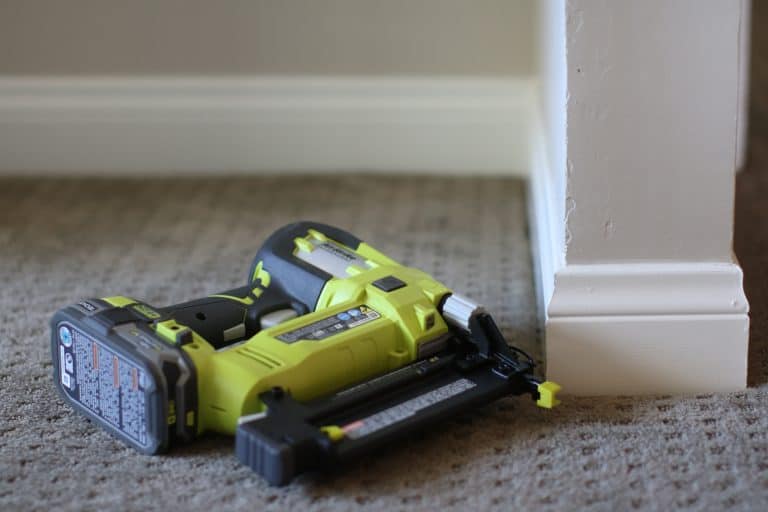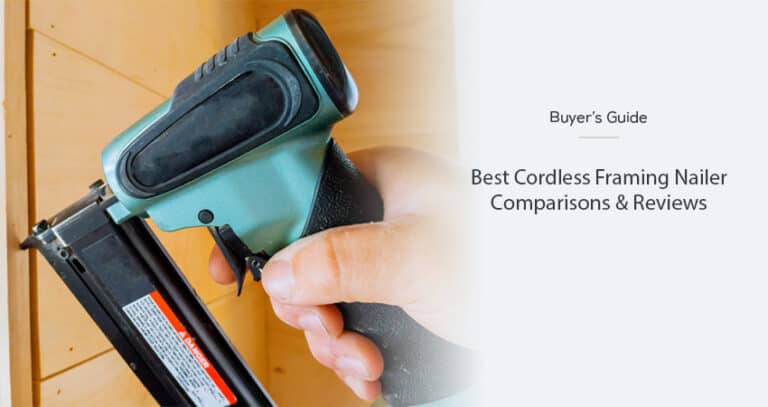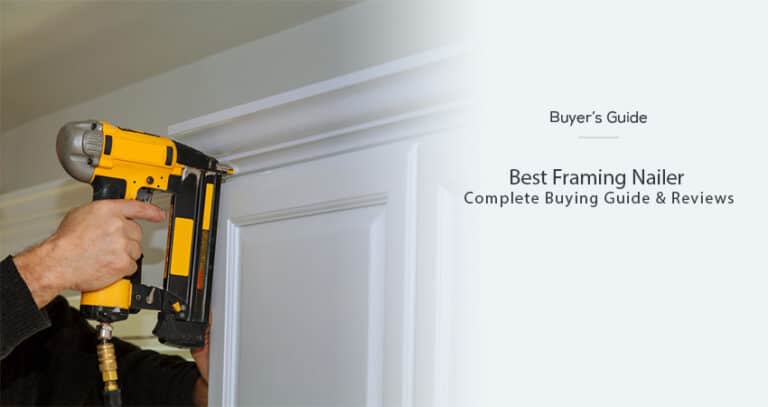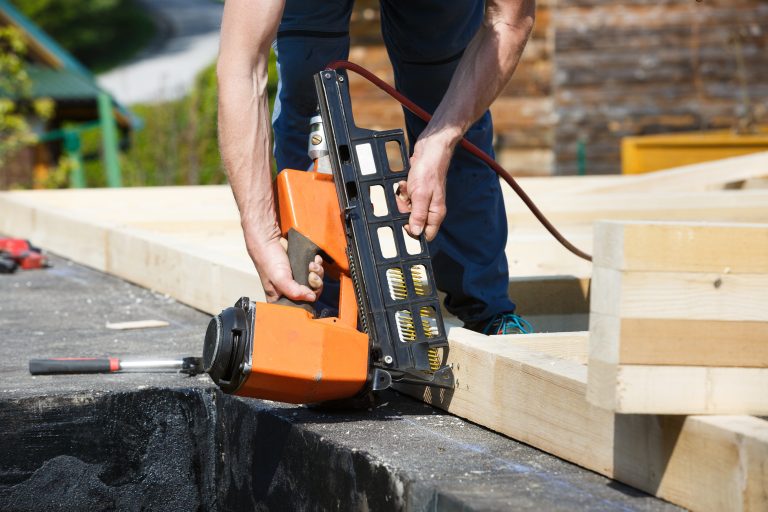There’s a common misconception that all nailers are alike. While straight nailers hold nails in the magazine at 90 degrees to the gun, there are angled nailers available in a wide variety of angle degrees. 21-degree and 30-degree nailers are the most popular angled models – but how does the angle degree set these nailers apart?
Contents
21 Degree Nailer vs 30: Which Nailer Should You Use?
Framing and finish nailers are available in two distinct types: straight and angled models. While straight nailers are rather straightforward, angled nailers come in a wide variety of angle degrees. Ultimately, the different angle degrees have resulted in a lot of confusion about how 21 degree and 30 degree nailers differ.
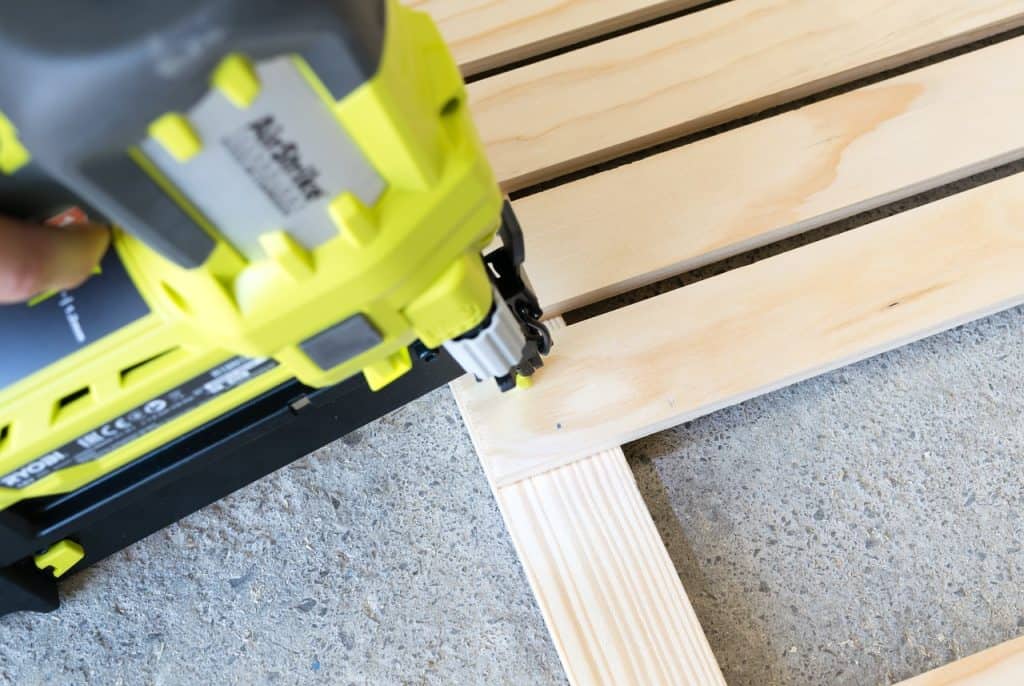
It’s important to note that the angle degree of a nailer does not refer to the slant at which the nail is driven; the angle degree refers to nail collation, which is how the nails are grouped and held together. Due to this, one of the main differences between 21 and 30 degree nailers is how the nails are collated, which we’ll discuss in a moment.
Overall, 21 and 30 degree nailers are both ideal for use in tight spaces and will drive nails straight into materials. These similarities can make it even harder to choose the correct collation angle for your needs. Comparing these nailers in terms of their collation, design, nail types, and uses will allow you to choose the correct nailer for your project’s needs.
Differences in Nail Collation
A 21 degree nailer’s magazine will accept strips of 60 to 70 nails collated in plastic strips. Depending on the nailer’s brand and model, the nails are placed on the plastic strips at an angle between 20 and 22 degrees. 21 degree nailers hold fewer nails than other angled models, including 30 degree and 15 degree nailers.
The magazine of a 30 degree nailer accepts strips of typically 88 nails collated in paper strips. Depending on the manufacturer, these nails are mounted at an angle ranging between 30 and 34 degrees. Many 30-degree nailers can hold two strips of nails in the magazine, which means the tool can be reloaded less frequently.
Design Differences
While angled nailers tend to be lighter and smaller than their straight counterparts, 21 degree nailers are commonly chosen for their sheer power. The design makes it easier to access tight corners with a 21 degree nailer while still having the power to drive nails into thicker materials. Plastic debris will litter your workspace as the plastic strip breaks as nails are fired.
Despite being called 30-degree nailers, you’ll find models ranging up to 34 degrees. In terms of common nail guns, this is the greatest angle you’ll find for nailers. 30 degree nailers have a more compact design and drive nails from a paper-collated strip, which leaves less overall mess than plastic collation. However, moisture can damage paper-collated nail strips and cause them to fail.
Types of Nails
Most 21 degree nailers use nails ranging between 2 and 3 ½ inches. These nails have a full-round head, which is reminiscent of the nails used by 15 degree nailers. Similarly, 30 degree nailers also drive nails ranging between 2 and 3 ½ inches. Ultimately, the type of nail collation is what sets these nailers apart.
While 21 degree nailers use plastic-collated nails, 30 degree nailers use paper-collated nails. 15 degree nailers use neither and are collated with a wire coil. Many professionals prefer 30 degree nailers because the magazine can accept more nails, and the paper collation means there’s less mess to clean up afterward.
Uses for Each Nailer
While 21 degree nailers can be used for many applications, professionals commonly use these nailers for siding, framing, decking, and sheathing. This type of nailer uses slightly thicker nails, which provides more holding power which is ideal for the above mentioned applications.
Similarly, 30-degree nailers are also commonly used for framing, decking, and siding. However, you can also use this nailer for general woodworking. The versatile and lightweight design of 30 degree nailers allows this nailer to create various types of wood joints.
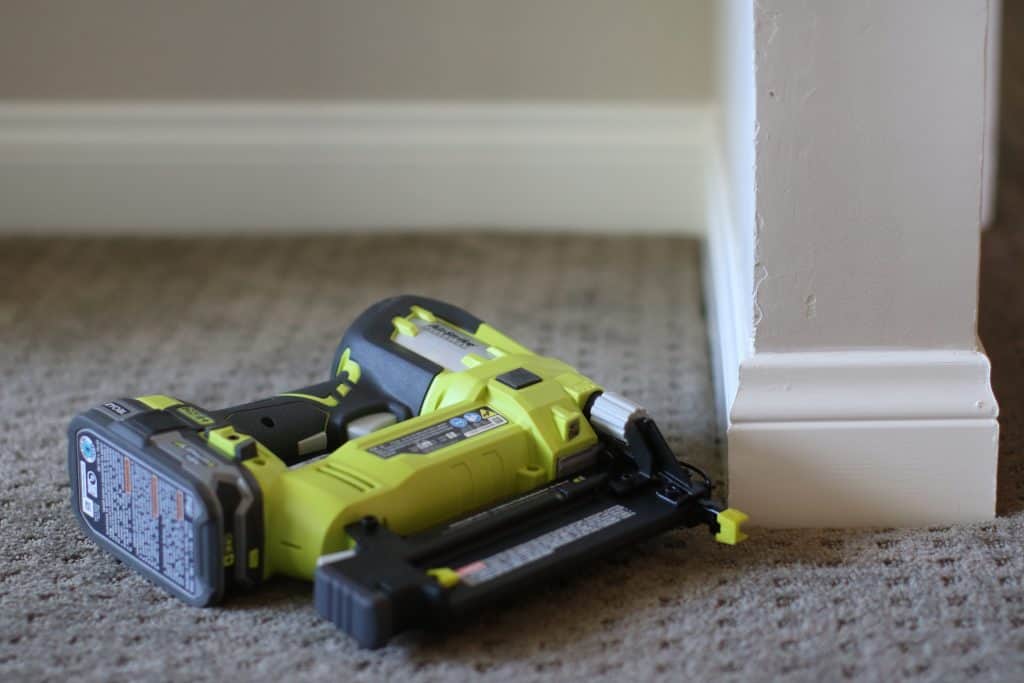
In Summary
While 21 and 30 degree nailers are more compact than other types, 30 degree nailers are more compact and versatile than 21-degree models. The powerful design of 21 degree nailers makes them ideal for construction projects requiring more holding power. However, 21 degree nailers hold fewer nails than 30-degree models.
30 degree nailers are more lightweight and compact, making them ideal for smaller woodworking projects at home. While the cost of these nailers will depend on factors like brand, model, and features, 21 degree nailers tend to be more expensive due to the more powerful design and heavy-duty uses.
Frequently Asked Questions
These are some of the other questions we frequently come across when 21 and 30 degree nailers are discussed.
Why Do Nailers Use Different Angles?
Since both 21-degree and 30-degree nailers drive nails straight into materials, many people have questioned why nailers use different angles. Ultimately, collating nails at an angle onto plastic or paper strips lets you fit more nails per strip and ensures your tool doesn’t need to be reloaded constantly. Angled nailers are also more compact and lightweight than straight nailers.
Does a Nailer’s Angle Affect the Angle the Nails Are Driven At?
The degree angle of a nailer does not affect the angle at which nails are driven into materials. Both 21-degree and 30-degree nailers will drive nails straight into surfaces. The degree angle refers to the nail collation, which is how the nails are held together on strips that are loaded into the nailer’s magazine.
What Are Other Common Nailer Angles?
Besides 21 and 30 degree nailers, 15 degree nailers are among the most popular options. These nailers use nails held in wire coil strips and angled at 15 degrees. Like 21 degree nailers, the nails have rounded heads. Professionals commonly use heavier 15 degree nailers for work on wall studs and floor joists.
Can 21 Degree and 30 Degree Nailers Be Used Interchangeably?
While both 21 and 30 degree nailers have similar designs and are used for similar functions, you shouldn’t use these tools interchangeably. For the best results, use the angled nailer instead of the straight nailer that’s better suited to your intended uses. You should also consider your preferred nail collation type!
Conclusion
The main differences between 21 degree and 30 degree nailers are how the nails are collated and the common uses for each tool. 21 degree nailers use strips of plastic-collated nails and are commonly used by construction professionals. 30 degree nailers are lighter, more compact, and use strips of paper-collated nails that are ideal for a variety of woodworking projects.
